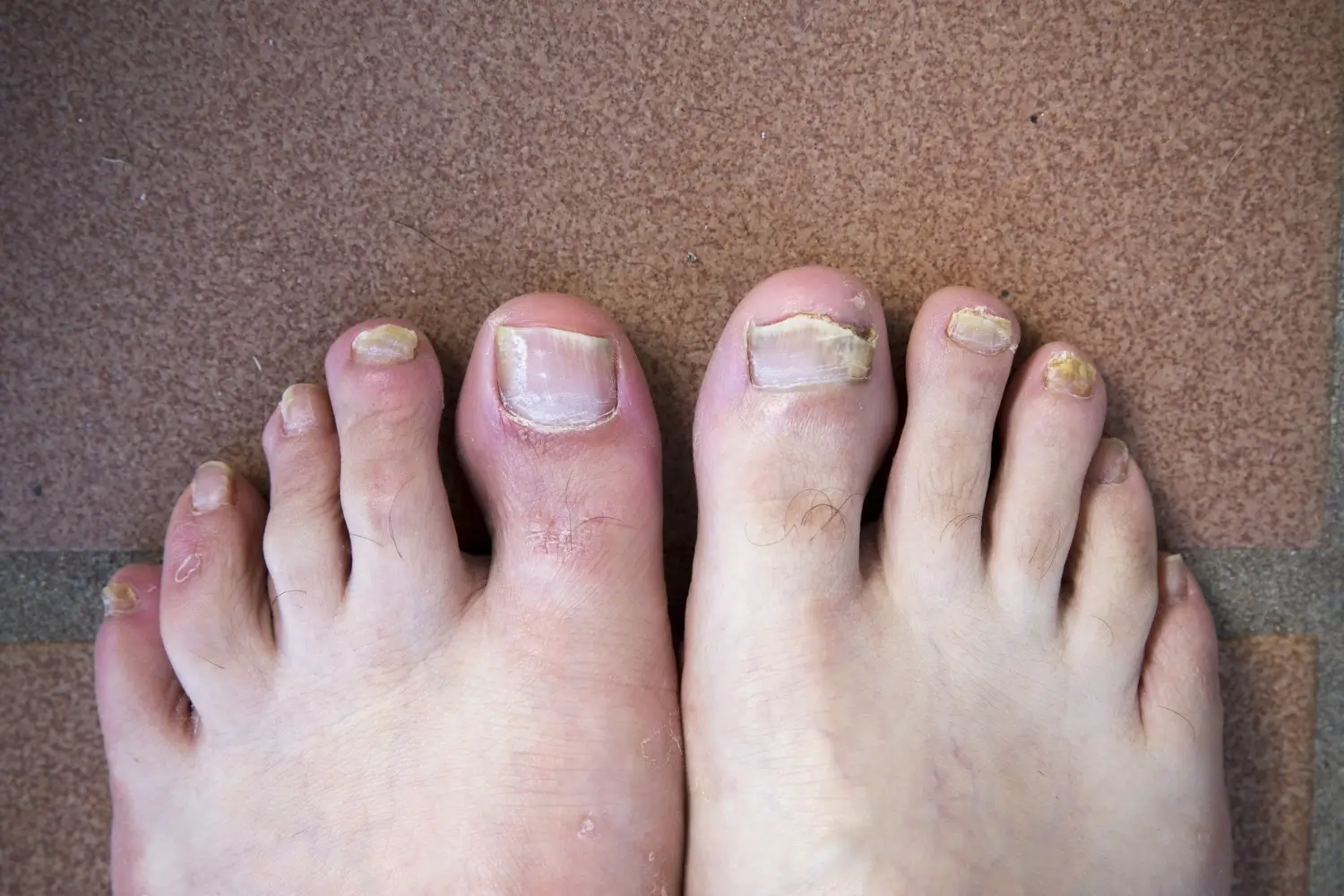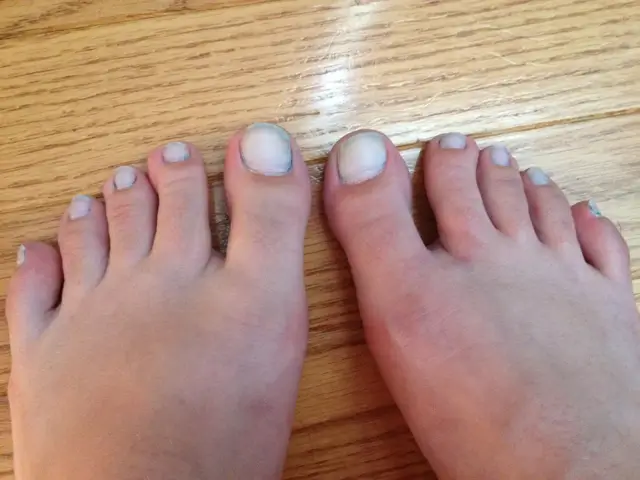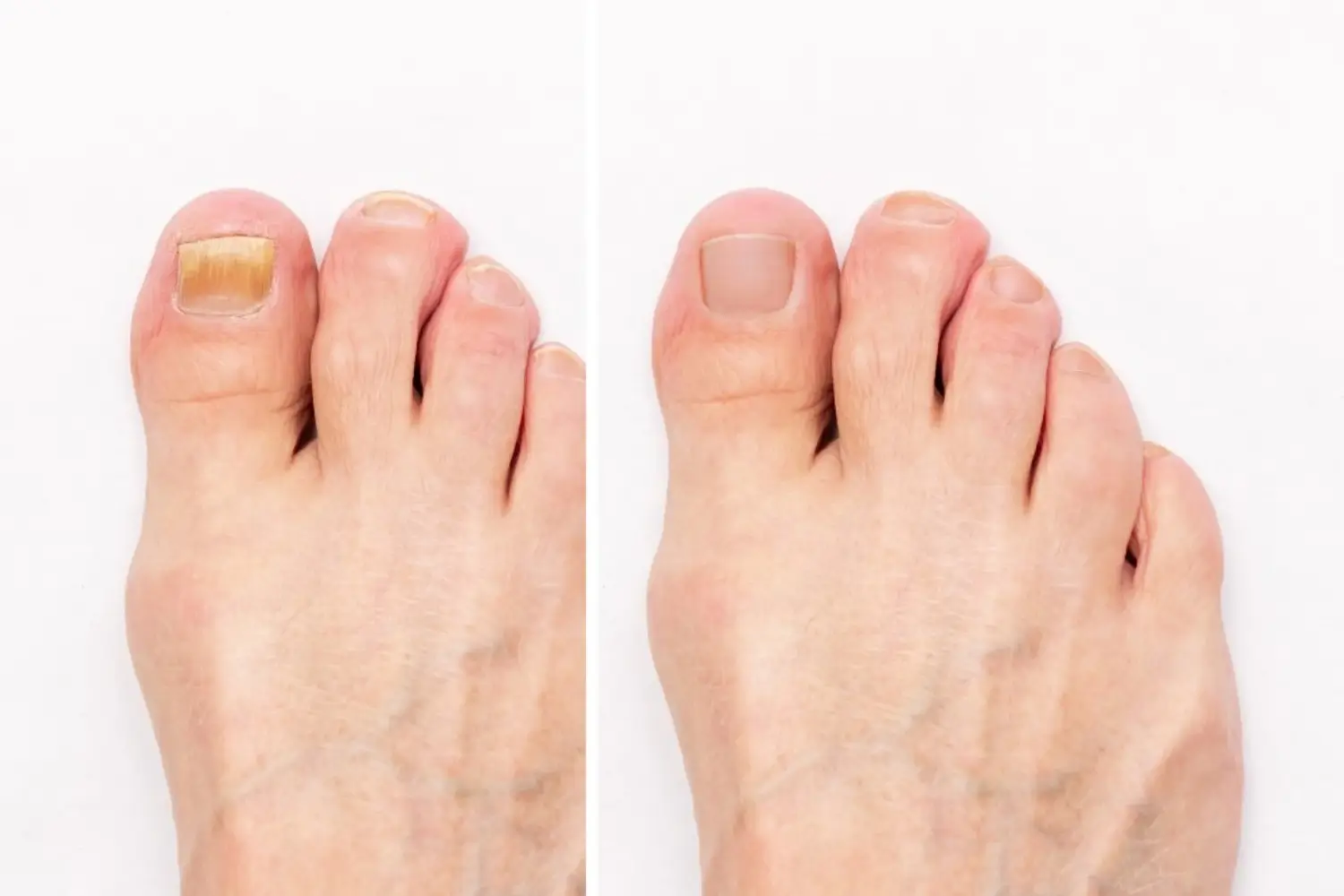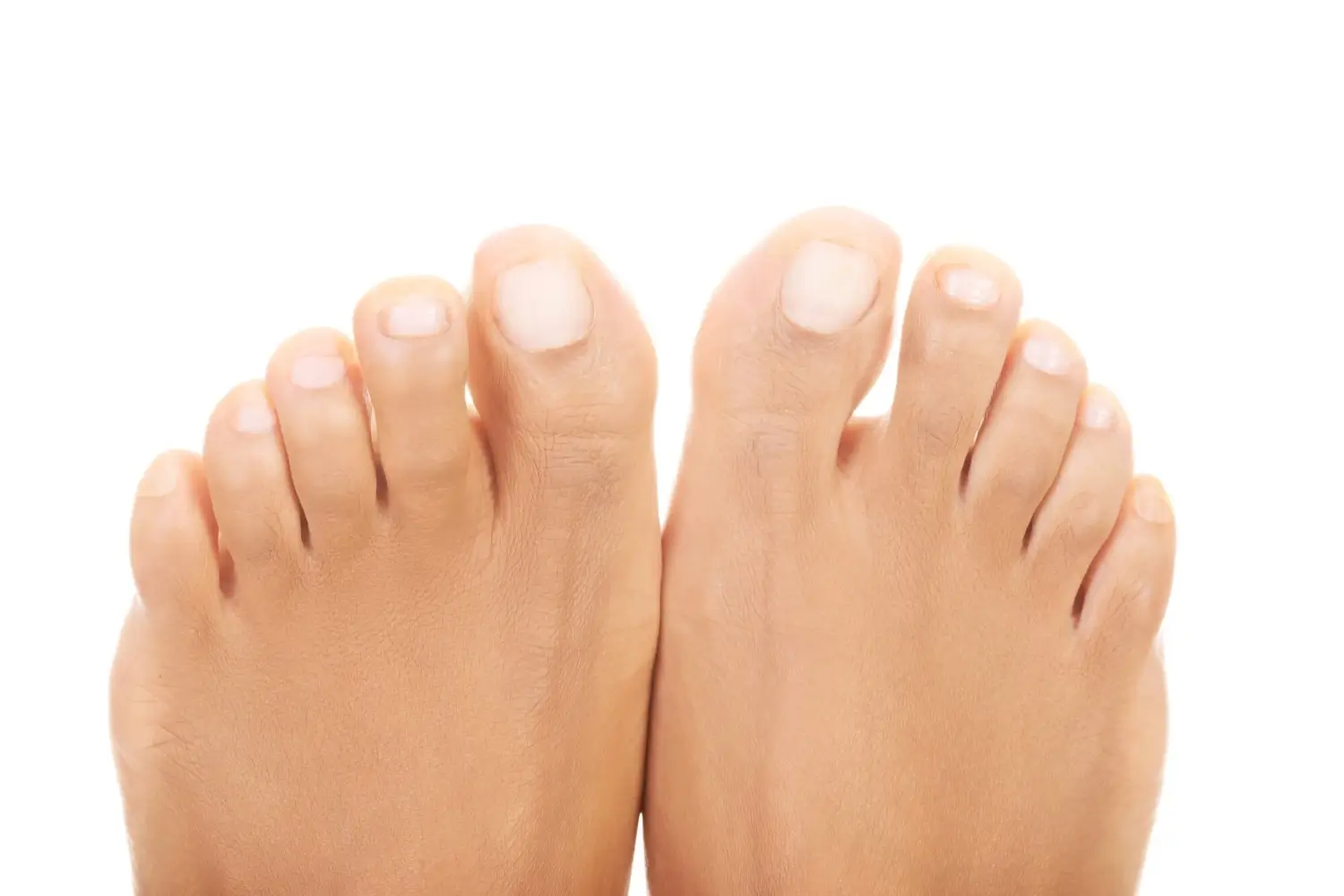
Having toenail fungus can be frustrating, especially if you also enjoy getting pedicures. But can you safely visit a nail salon dealing with a fungal infection?
Fungal infections of the toenails, also known as toenail fungus or onychomycosis, are common. They can cause the nails to become thick, discolored, and crumbly.
While you might still want to pamper yourself with a pedicure, it's essential to understand some safety measures and alternative options to avoid spreading the infection or making it worse.

Toenail fungus, also known as onychomycosis, is a fungal infection that affects the nails on your toes. It's a fairly common problem that can happen to anyone.
If you have toenail fungus, there are a few signs to watch out for. Your toenails might become thicker and crumbly than usual. They could also change color to yellow, white, or brown. Sometimes, the nails might even become detached from the nail bed underneath.
So, what causes toenail fungus? Fungus is a tiny living organism that thrives in warm, moist environments. Your shoes and socks create the perfect place for fungus, especially if your feet sweat a lot. Tight-fitting shoes can also trap moisture and make the problem worse.
There are a few other things that can increase your risk of getting toenail fungus. People with weak immune systems, athletes wearing sweaty shoes for long periods, and older adults are more likely to develop it. Sharing shoes with someone who has toenail fungus can also spread the infection.
If you're concerned about toenail fungus, you must see a doctor or podiatrist (a foot doctor) for proper diagnosis and treatment. Several options are available for treating toenail fungus, including antifungal medications taken by mouth or applied topically to the nail. Sometimes, your doctor might recommend removing part or all of the affected nail.
If you have toenail fungus and love getting pedicures, you might wonder if visiting a nail salon is safe. While getting a pedicure with toenail fungus isn't inherently dangerous, there are some safety concerns. The biggest concern is spreading the infection. Fungus thrives in warm, moist environments, and the tools used during a pedicure, like clippers and flies, can harbor fungal spores. If these tools aren't properly disinfected between clients, the fungus could spread to other people's nails.
Salon hygiene practices are key to preventing the spread of infections, including toenail fungus. A clean and reputable salon should disinfect its tools thoroughly after each use and use disposable items, like foot files and toe separators, whenever possible.
Here are some tips for reducing the risk of infection at a nail salon:
Sometimes, it might be best to wait for a pedicure until your toenail fungus is treated.This is especially true if your infection is severe or widespread. Talk to your doctor about your toenail fungus and whether getting a pedicure is safe.

Even though getting a pedicure with toenail fungus isn't necessarily dangerous, you can take steps to minimize risks and ensure a safe experience. Here are a few precautions to consider:
Remember, communication is key! By letting the salon know about your toenail fungus and understanding their hygiene practices, you can help ensure a safe and enjoyable pedicure experience.
Finding the right nail salon, especially if you have toenail fungus, is essential for safety and a relaxing experience. Here are some key things to look for when choosing a salon in Markham or Mississauga:
Considering these factors, you can increase your chances of finding a safe and reputable salon in Markham or Mississauga that prioritizes hygiene and infection prevention.

While medication prescribed by a doctor is often the most effective way to treat toenail fungus, you can also try some home remedies and over-the-counter options. It's important to remember that these treatments might take longer and may only be as effective for some. Here are a few options to consider:
Important Note: It's always best to talk to your doctor before trying home remedies or over-the-counter treatments for toenail fungus. They can help you determine the best course of action for your specific situation.
Suppose home remedies or over-the-counter medications aren't working for your toenail fungus. In that case, your doctor can recommend some more robust treatment options. Here are two main approaches:
Talking to your Doctor: No matter which treatment option you choose, speaking to your doctor about the best course of action is important. They can consider the severity of your infection, overall health, and medical history when recommending. Be sure to ask your doctor any questions about toenail fungus treatment.

Toenail fungus is no fun, and the good news is there are ways to help prevent it from happening in the first place! Here are some simple tips to keep your feet healthy and fungus-free:
Following these easy steps can help keep toenail fungus away and maintain healthy, happy feet!
Just got a fabulous pedicure? Here are some aftercare tips to keep your feet looking and feeling great:
By following these simple steps, you can extend the life of your pedicure and keep your feet healthy and happy!

Even though pedicures are a fun way to pamper yourself, there are times when it's best to wait for your feet to be in tip-top shape before heading to the salon. Here are a few situations where you might want to postpone your appointment:
By following these simple guidelines, you can ensure a safe and enjoyable pedicure experience!
Toenail fungus can be stubborn, but there are times when it's best to see a doctor for professional advice. Here are a few signs that a visit to the doctor might be a good idea:
Remember, ignoring toenail fungus won't make it go away. Early diagnosis and treatment can help prevent the infection from spreading and keep your feet healthy.
Taking care of your feet is important, and pedicures can be a fun way to pamper yourself. However, as we've learned, some things must be considered to ensure your pedicure experience is safe and enjoyable. Understanding the risks of toenail fungus and following proper hygiene practices at nail salons can help prevent infections.
If you're concerned about toenail fungus, alternative treatments are available besides pedicures. Consulting a doctor can help you determine the best action for keeping your feet healthy. Remember, healthy feet are happy feet!
Keeping your feet healthy is essential! Share this article with your friends and family so they can learn about pedicure safety, too. For more foot care tips, be sure to follow us! If you have concerns about toenail fungus, remember that a doctor can help you determine the best action for healthy feet.
Getting a pedicure if you have toe fungus is generally not recommended. Fungal infections can spread through shared tools and surfaces in nail salons, potentially worsening the condition and spreading it to others.
Signs of toenail fungus include thickening, discoloration (yellow, white, or brown), and crumbliness of the nails. Sometimes, the nails may detach from the nail bed.
Toenail fungus, or onychomycosis, develops due to fungal infections thriving in warm, moist environments commonly found in shoes and socks. Factors like sweaty feet and tight-fitting shoes can exacerbate the problem.
While not inherently dangerous, getting a pedicure with toenail fungus carries some risks. Proper hygiene practices at the salon, informing technicians about the infection, and considering alternative options are crucial for safety.
Before getting a pedicure with toenail fungus:
See a doctor for toenail fungus if home remedies or over-the-counter treatments don't improve symptoms or if you experience persistent or worsening symptoms. Consulting a doctor can help determine the best course of treatment for your specific case. Ding over-the-counter medications, prescription medications, and laser treatments. The best treatment for you will depend on the severity of your infection. Always talk to your doctor to determine what treatment is proper for you.